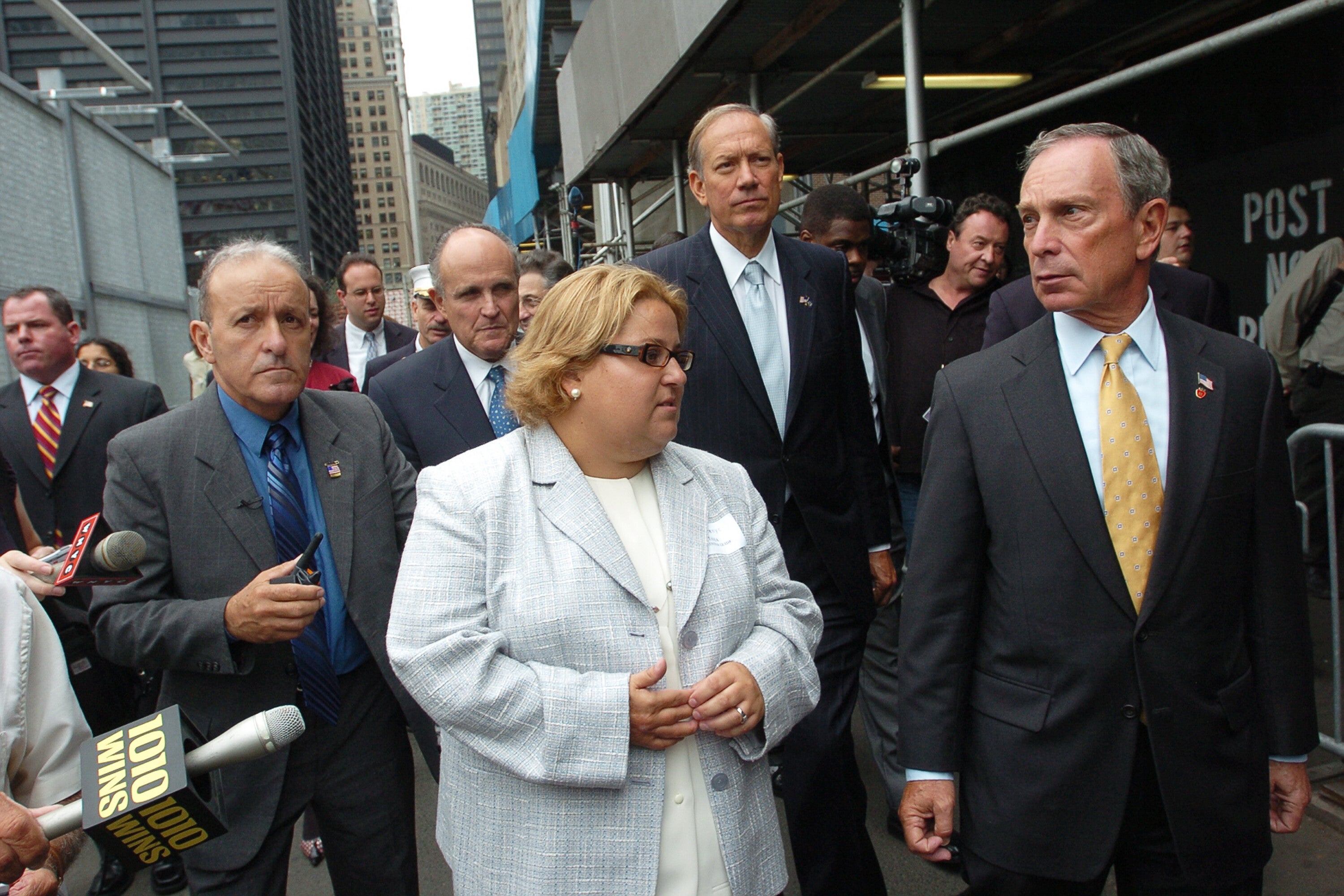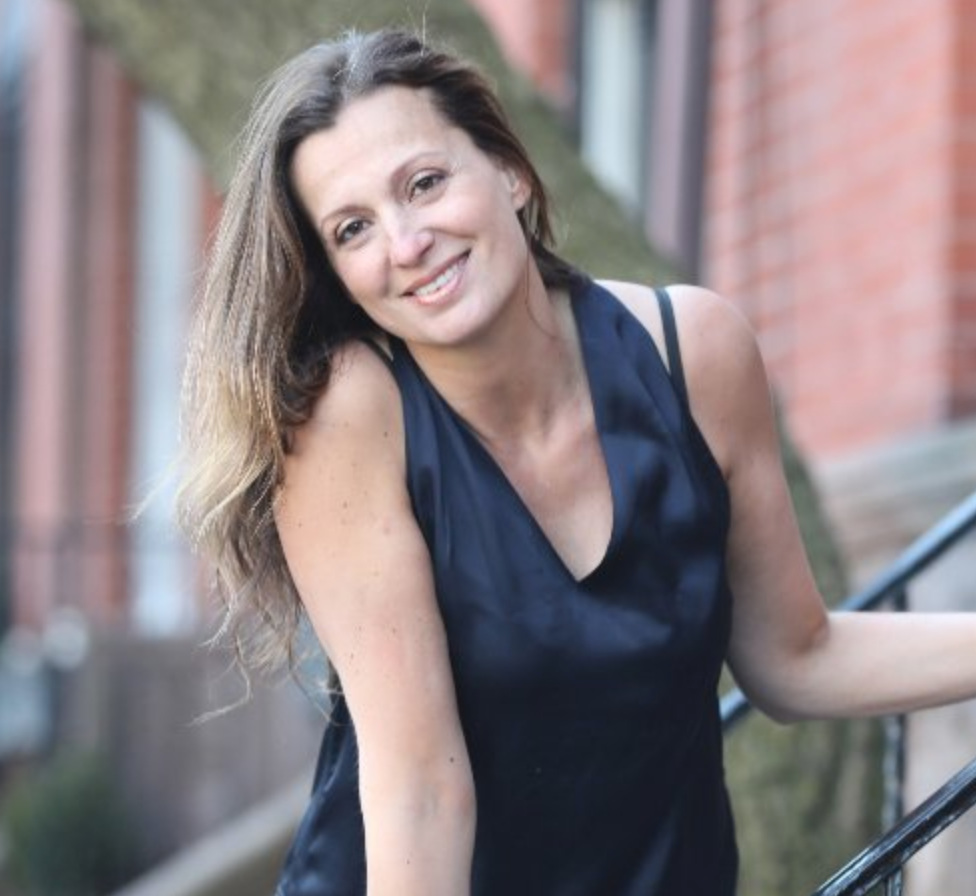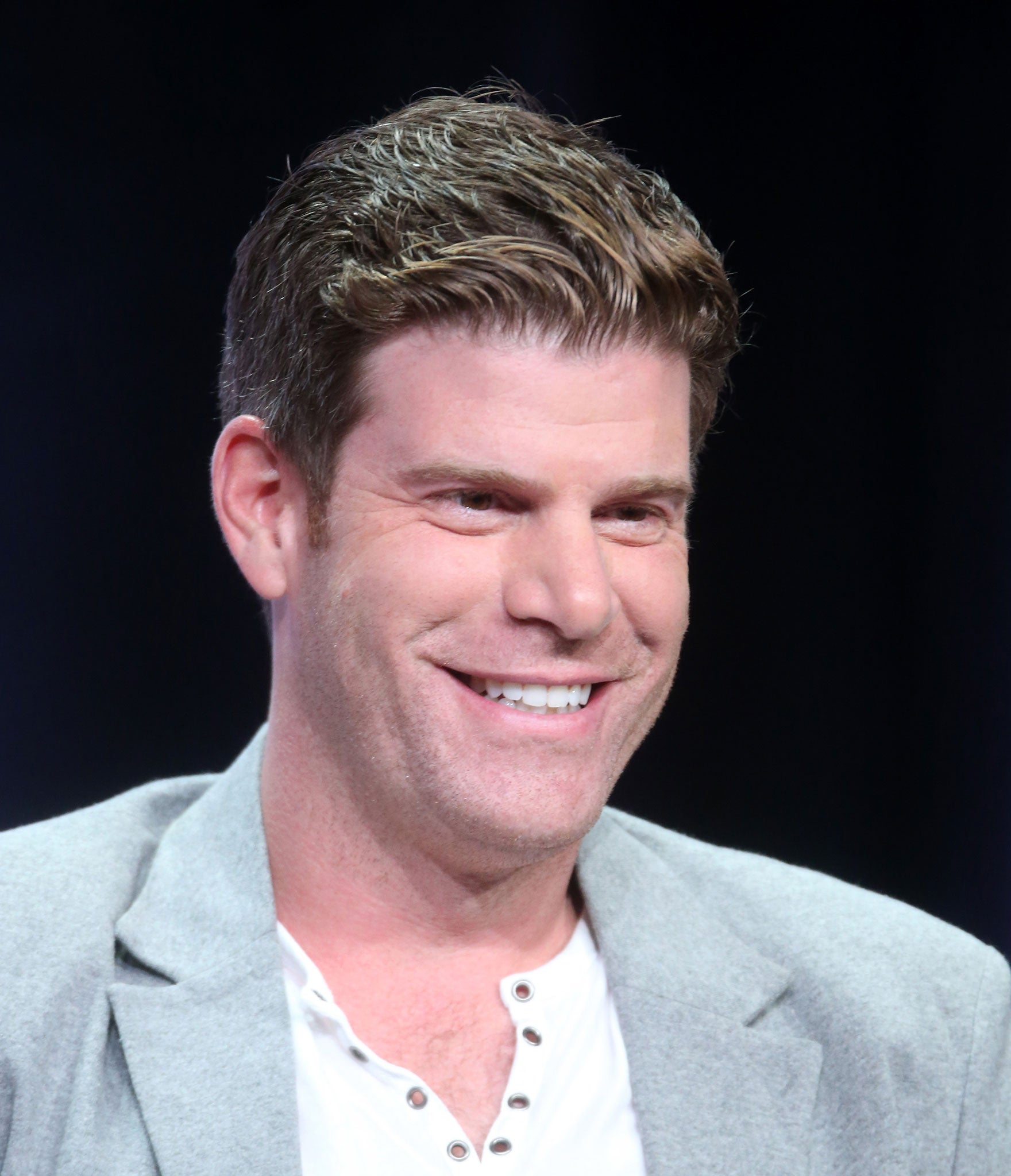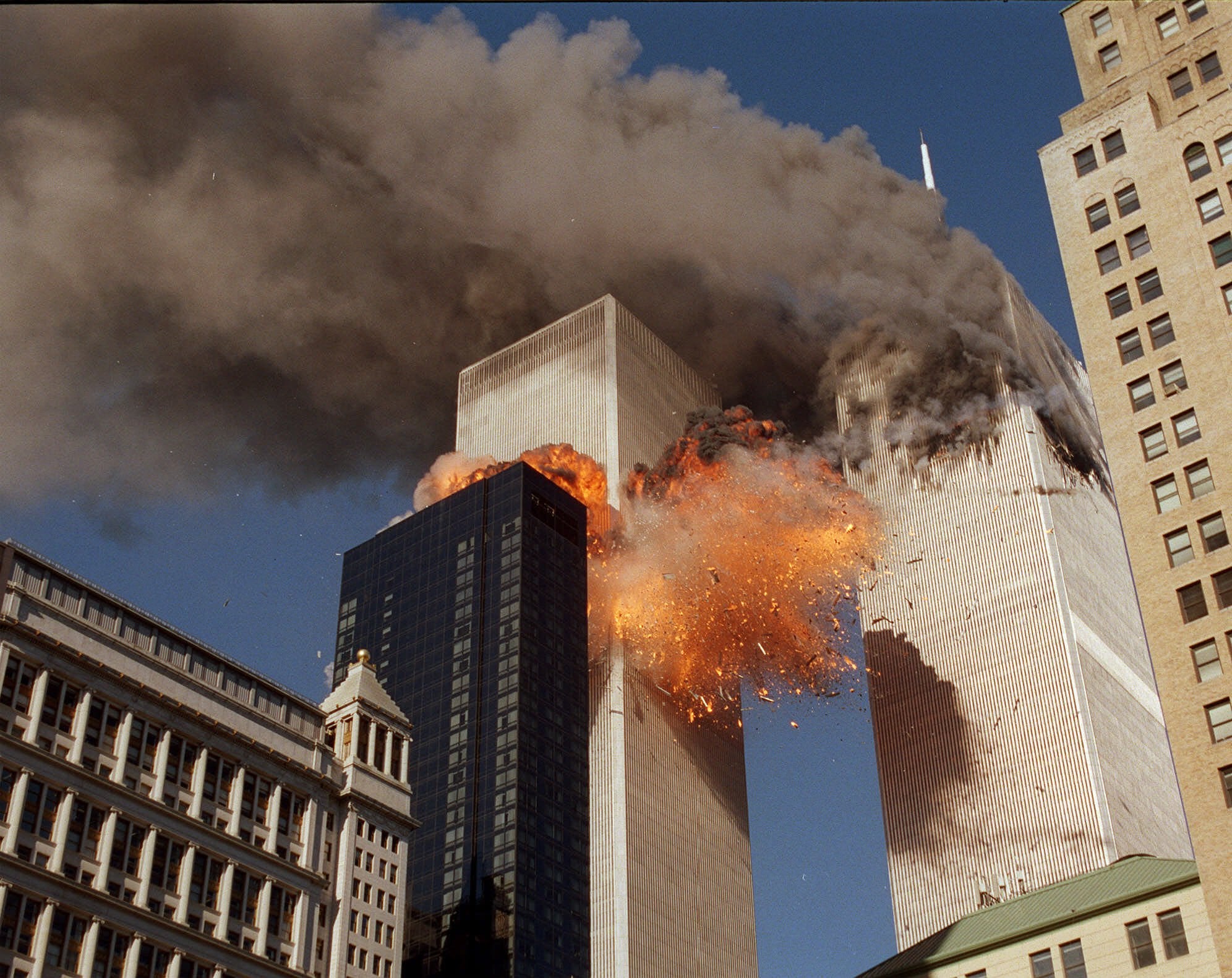‘It spiralled out of control’: The fantasists who pretended to be 9/11 survivors
Fake stories of heroism and grief became so common in the aftermath of the terrorist attacks on the Twin Towers that they came to be known as the ‘9/11 sign’, writes Bevan Hurley
Your support helps us to tell the story
This election is still a dead heat, according to most polls. In a fight with such wafer-thin margins, we need reporters on the ground talking to the people Trump and Harris are courting. Your support allows us to keep sending journalists to the story.
The Independent is trusted by 27 million Americans from across the entire political spectrum every month. Unlike many other quality news outlets, we choose not to lock you out of our reporting and analysis with paywalls. But quality journalism must still be paid for.
Help us keep bring these critical stories to light. Your support makes all the difference.
An up-and-coming comedian hoping to advance his career, a Spanish MBA student with a love of all things American, a firefighter who told of pulling bodies from the smouldering rubble at Ground Zero.
From exaggerations to outright fabrications, the 9/11 terror attacks attracted countless fake tales of heroism and survival, of narrow escapes and lost loved ones.
While some sought proximity to the attacks for sympathy or attention, others appeared to become so attached to these false narratives that they came to believe their own lies.
So common would these deceptions become among the patients of New York clinical psychiatrist Jean Kim that she came up with a term for it: the “9/11 sign”.
‘The woman who wasn’t there’
In 2001, Alicia Esteve Head was 28 and living in Barcelona. The daughter of a wealthy Spanish family, she had enjoyed an extremely privileged upbringing, and grew up riding pedigree Arabian stallions on her family farm in Mallorca.
She was generous to her friends, who would later recall her propensity for talking about mysterious, wealthy boyfriends that nobody else ever met.
On 11 September, Ms Head was enrolled at the Esade Business School where she was completing an MBA.
The next year she moved to Manhattan, taking an apartment in Midtown and a new first name: Tania.

In the years that followed, Ms Head became heavily involved with the network of survivors who had connected online and would meet up to swap stories and plan for a fitting 9/11 memorial. They eventually became like a family.
Among the shared tales of survival, Ms Head’s stood out. From reading over press reports and becoming immersed in the survivor’s group, she concocted an elaborate fantasy about how she had been chairing a meeting at Merrill Lynch on the 78th floor of the South Tower when the first plane struck the North Tower at 8:46am.
Her fiance ‘Dave’, a consultant at Deloitte, had been on the 100th floor of the North Tower. When the second plane hit at 9:02am she vividly described crawling through smoke and flames to get to safety.
Her story fused mundane and horrific details together. She would later say how her thoughts turned to the silly argument she and Dave had as they got out of their shared taxi.
In the next breath, she recalled the burning bodies flinging themselves out of the skyscraper, the screaming, the desperation to work out what had happened.
She later told members of the World Trade Survivors Network she saw the wing of the United Airlines Flight 175 Boeing jet slice like a knife into the building just above her.
Her assistant “Christine” was decapitated in front of her. Glass and debris flew everywhere as the walls imploded. As Ms Head was thrown against a wall, she could only wish that she would die quickly.
Her arm nearly severed, amid the dust and chaos she recalled incredibly vivid details. She later claimed was led to safety by a genuine hero of the attacks, the man in the red bandana, Welles Crowther.
A man emerged from the rubble with a ring that he asked her to give his wife. She later delivered the ring.
She claimed to have woken up in a hospital burns unit six days later, only to discover that her husband Dave had been killed in the north tower.
On and on the fantastical tale went, gathering such cinematic swagger that she would try to make actual survivors feel guilty about sharing their own trauma in front of her.
Ms Head threw herself into the work of the Survivors Network, founding a group of survivors from the South Tower.
In 2003 a man named Gerry Bogacz who had survived the North Tower got in touch, and they eventually merged to found the World Trade Center Survivors’ Network.
Ms Head poured energy, time and money into helping the group achieve tax-free status. And crucially, she never sought to claim any financial compensation, her family wealth meant she didn’t need to, and so she couldn’t be criminally charged for her deception.
She accompanied former-NYC Mayor Rudy Giuliani, then Governor George Pataki and Michael Bloomberg on a tour of the site in 2005, as crucial debates were taking place about what would become of Ground Zero.
She eventually elbowed Mr Bogacz out of the network, becoming president.
As Ms Head’s fame grew, parts of her story began to unravel.
She described to friends in great detail Dave’s romantic proposal and how he had taken her to Hawaii for a small, non-legal commitment ceremony on the beach. They had been planning to get legally married in October, she said, and were living together in Manhattan with their Golden Retriever, Elvis.
But when friends would come to her apartment, Elvis was always being walked by her maid.
‘Dave’ was a real person, but reporters who spoke to his family discovered the relationship was imagined.
Plus, her injuries weren’t consistent with having a severed arm. She had scarring, but not the kind of injuries that could have come from what she had described.
These inconsistencies in her story were noticed, but let go by other survivors. It would have been crass to point them out, thought film-maker Angelo Guglielmo, who became embedded with the network of survivors and would go on to make a documentary about Ms Head, The Woman Who Wasn’t There.
Her story was finally exposed in a 2007 New York Times article.
Ms Head has not been seen publicly in more than a decade.
According to the Spanish newspaper El Pais, she is still registered as living at the family home in Barcelona.
The Independent was unable to verify a Linkedin profile for Alicia Esteve Head that appears to match her biography and claims she is still working at the Esade Business School and living in New York.
The Esade business school did not respond to requests about whether she was working there.
No record of anyone matching Mr Stein’s name could be found on publicly searchable databases.
When contacted for this article, Mr Bogacz said he had put his experience with Ms Head behind him.
“Almost all that I’ve talked about in the past has been on Tania Head’s fabrications which destroyed the WTC Survivors’ Network,” he said.

Monica Iken-Murphy, who lost her husband Michael Iken on 9/11, got to know Ms Head through her work helping to create the 9/11 Memorial at Ground Zero in Manhattan’s Financial District.
While the pain of losing her husband is just as intense 20 years on, she long ago let go of any ill-feeling towards Ms Head.
“I don’t get angry, I just feel bad that they feel that it’s OK to do that,” she said.
“I can’t be hurt because it’s not me doing it. I feel really sorry for her. And if you feel it’s good to lie about something like that, those poor souls?
“You cannot escape that. There is a time that you can get away with it, but you’re not going to get away with it forever.”
Mrs Iken-Murphy told The Independent many people “came out of the woodwork” after 9/11 seeking to benefit from her misery.
“They thought I won the lottery,” she says.
“There was no lottery for me. I was a happily married woman, and I actually watched my husband get murdered on live television.
“So I had to deal with that problem, with blood money. You may think you want to be me, but you don’t want to be me.”
To this day, no remains of her husband have ever been found. She has since remarried and poured herself into projects such as her Iken Science Academy, a preschool she founded on New York’s Upper East Side helping children into the sciences, helping create the 9/11 Memorial at Ground Zero, and raising her children.
‘We all sometimes lie and exaggerate a story to seem cooler’
Years after the attacks,actor and comedian Steve Rannazzisi spoke of his own narrow escape from the 54th floor of the north tower.
Mr Rannazzisi, who had a lead role in comedy series The League, first made the claim in a 2009 interview on the WTF Podcast with Marc Maron.
“Yeah, I was there, and then the first tower got hit and we were like, jostled all over the place and then the Port Authority came on the loudspeaker and they were like, ‘Hey, uh, explosion in Tower One, um, things are being taken care of, everyone remain where you are. Stay calm. We’re figuring things out. And I was like, ‘well, I’m going to go check this thing out.’ So I went downstairs, walked outside, saw all of the pandemonium and then about five or six minutes later… bang.”

In reality, Mr Rannazzisi was at work nearly 40 blocks away in Midtown when the planes hit.
He repeated the false claims in several other interviews, even claiming his wife had been supposed to have been in the towers but a delay had saved her life.
He told interviewers that he had “those falling dreams” for years.
In 2015, when confronted by The New York Times, Mr Rannazzisi apologized and admitted the deception.
“It is to the victims of 9/11 and to the people that love them – and the people that love me – that I ask for forgiveness.
“It was profoundly disrespectful to those who perished and those who lost loved ones. The stupidity and guilt I have felt for many years has not abated. It was an early taste of having a public persona, and I made a terrible mistake.”
At the time Mr Rannazzisi was called out by comedian Pete Davidson, whose firefighter father Scott died after being sent into the World Trade Center.
“It’s ok @SteveRannazzisi people make mistakes … Can’t wait to meet my dad for lunch later,” Mr Davidson wrote on Twitter.
The SNL comedian later told his followers to “take it easy” on Mr Rannazzisi, saying he had received and accepted a personal apology from him.
“We all sometimes lie and exaggerate a story to seem cooler.”
When contacted, Mr Rannazzisi said he had nothing more to say on the matter.
An even more brazen 9/11 imposter dressed in an FDNY uniform as he told an audience at the 10th anniversary ceremony in 2011 how he had taken part in rescue missions as captain of Ladder 133 in New York City.
Jordan Liflander claimed to have attended 47 funerals in three weeks for those who perished in the attacks.
A year later, Mr Liflander was exposed as a fraud, never having worked at FDNY, let alone helped with the rescue and recovery.
“It was just ego,” Mr Liflander would later say in an interview about why he had impersonated a grieving firefighter.
“Silliness. Trying to fit in and be one of the guys. It just spiralled out of control and became a lie I had to live.”
‘The 9/11 sign’
In the years after the attacks, clinical assistant professor of psychiatry at George Washington University Jean Kim began noticing more and more of her New York patients claiming to have lost a loved one on 9/11.
The attacks on the Twin Towers was an act of mass murder unlike anything experienced in modern America. But Dr Kim realised the 2,977 people who died simply didn’t correspond with the number of patients who were reporting lost friends and relatives.
“My cynicism started to creep forth,” Dr Kim wrote in the Washington Post in 2015.
“Anyone with a report of a 9/11 death in their history was likely seeking some sort of secondary gain, at best in the form of greater sympathy in the face of a multitude of other tough psychosocial stressors in their lives, or at worst, to get controlled substances or even to apply for special 9/11 benefits.”
Her suspicions were confirmed when she checked out one patient’s story, and found it to have been false.
She coined the term, the “9/11 Sign”.
‘Where were you on 9/11?’
Like the assassination of John Kennedy or the death of Princess Diana, major tragedies that play out in full public view often become seared into people’s consciousness.
They’re known as flashbulb memories, Dr Elizabeth Loftus, the leading authority on false memory and cognitive psychology in the US, explains.
Dr Loftus, a distinguished professor in psychological science at the University of California, says most people who experience a momentous historical event over the age of eight can readily recall where they were and what they were doing when they heard the news.
Now 76, Dr Loftus remembers with crystal clarity how she learned of President Kennedy’s death, aged 19, and having just hopped off a plane in New York City on her way to the Harvard-Yale football game.
Memories of learning about the Twin Towers attacks aren’t quite as indelible, but she still has a distinct recollection of being told of the attack by a friend in Washington state where she was living at the time.

Dr Loftus has testified about the fallibility of memory in dozens of high-profile criminal cases from the 1993 trial of officers accused of assaulting Rodney King to Harvey Weinstein’s sexual assault case last year.
And having appeared as a defense witness for some of the most vilified criminals of our time, she believes we should be more empathetic and less judgmental.
She cites the example of MSNBC anchor Brian Williams falsely claiming he had been riding in a Chinook helicopter that came under RPG fire and required an emergency landing in 2003.
Mr Williams was fired from his job as host of NBC Nightly News over the scandal, a harsh outcome according to Dr Loftus. She thinks Mr Williams’ memory evolved over time, and believes a similar thing has happened with 9/11 glory seekers.
“Even really, really, really, smart, educated people have come to believe that they had experiences that they later had to admit just never happened,” she says.
She says people’s stories often get a little bit more lurid and dramatic with each telling, and pretty soon the account has evolved into something far from the truth.
“It may be that people are lying to get sympathy and empathy and the other rewards that come from being a victim of one of these experiences. And they end up believing these lies.
“We’ve got to leave room for scorn against the ones that get limited victim’s compensation funds. We don’t have to have too much compassion for them.”
‘There are lies and then there is self-delusion’
Felipe De Brigard is a professor of philosophy and cognitive neuroscience at Duke University and works at the intersection between imagination and memory.
He says determining whether a person is being intentionally deceitful, or has come to believe their own lies, is complex.
“Suppose that I tell you something I think is false and it turns out to be true: am I lying to you?” he asks.
“And if I tell you a fact that is false but I happen to believe it to be true, am I lying?”
He has studied the phenomenon of confabulation in patients who had damage in the prefrontal cortex, the part of the brain that influences complex tasks such as planning, social interaction, personality and memory.
In some cases, brain damage possibly brought on by alcohol abuse had caused patients to attach themselves to a narrative that was “clearly wrong”.
He says there is a point in which the pathology was such that the lie was no longer thought of as a lie. It became their truth.
“If I could tell by some neural signature, whether a particular thing that a person is experiencing as a memory is a lie or a run of the mill false memory, I would be rich. It is very difficult if not impossible to separate those things.”
Subscribe to Independent Premium to bookmark this article
Want to bookmark your favourite articles and stories to read or reference later? Start your Independent Premium subscription today.




Join our commenting forum
Join thought-provoking conversations, follow other Independent readers and see their replies
Comments